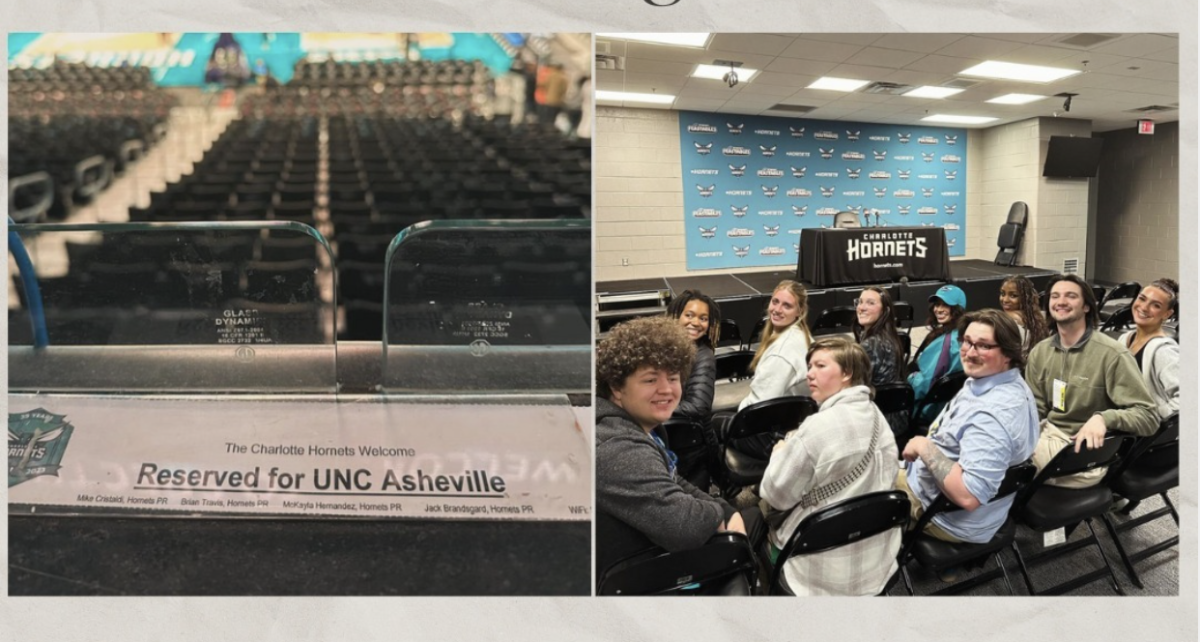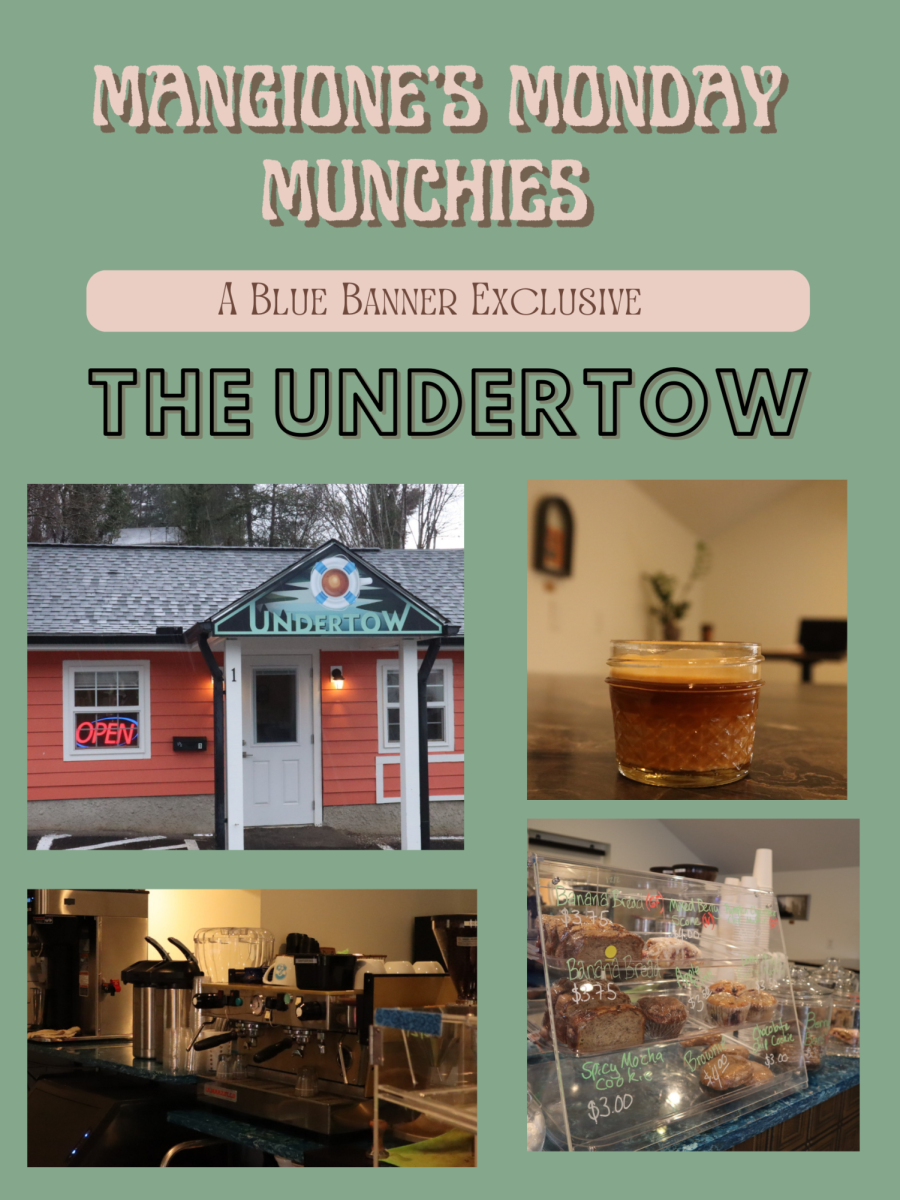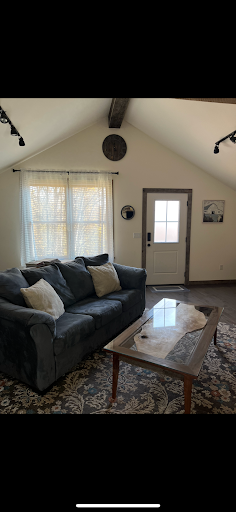Katie Bloomer
Contibutor
[email protected]

David Rayburn, a historic interpreter at the Thomas Wolfe Memorial, helps preserve the infamous writer’s childhood home, the Old Kentucky Home boardinghouse.
An angel stands guard over the visitors of Pack Square in downtown Asheville. It stands just outside the north entrance of the Asheville Art Museum, a monument clothed in bronze and humility, the head downcast and the right arm raised. There lies beneath the feet a plaque which states:
“Whereon the pillars of this earth are founded, towards which the conscience of the world is tending—a wind is rising, and the rivers flow.”
These were some of the final words of Asheville local Thomas Wolfe, originally written and published in a short story only a few months before his death in 1938 and editorially included in his posthumous novel “You Can’t Go Home Again.”
“Wolfe was a giant of literature in the mid-20th century,” said Tom Muir, the historical site manager at the Thomas Wolfe Memorial. “He is still today considered by many to be North Carolina’s most famous author.”
The Thomas Wolfe Memorial Angel stands in the same spot as his father’s old monument shop and less than half a mile down the street from his childhood home, the Old Kentucky Home boarding house. The boarding house now stands as the Thomas Wolfe Memorial, a state historic site with guided tours of the old house and a small museum and theater in the visitor center.
At the Preservation Society of Asheville and Buncombe County, Executive Director Jessie Landl said historical preservation, in the past, mostly focused on places which were either architecturally unique or attached to a specific person or event.
“Now we are talking a lot more about the cultural importance of places that are perhaps less grand but have cultural significance to a community,” Landl said. “I think that broadens our vision of what preservation is.”
Asheville redefines historical preservation
Thomas Wolfe represents only one small part of Asheville’s rich historical culture. Landl and her coworkers at the PSABC work tirelessly to ensure the preservation of some of the county’s oldest structures.
“I think one thing that I’ve always really liked about Asheville is how old the city feels,” said Wiley Cash, New York Times bestselling author of “A Land More Kind Than Home,” and alumni author-in-residence at UNC Asheville.
Cash, born and raised in Gastonia, said he found his true home in Asheville when he arrived at 18-years-old. Around the same time, Cash found within himself a growing interest in history.
“I probably know Asheville’s history better than I know any city that I’ve ever lived in because of that, because I really immersed myself in this place when I lived here,” Cash said.
Cash is not alone in his fondness for the city. According to the U.S. Census Bureau, between 2010 and 2019 Asheville’s population grew by 11.3% and Buncombe County’s population grew by 9.6%.
“Right now, part of what makes Asheville such a desirable place to come visit is our historic architecture,” Landl said.
Originally from Sanibel Island, Fla., Landl moved to Asheville roughly five years ago.
“We were looking for a place that had seasons,” Landl said. “My parents have a house outside of Asheville and so we’ve been coming here and we just gave it a try and stayed.”
Landl said her favorite thing about Asheville is the historic architecture, but she sees problems arising due to Asheville’s popularity.
“Because we’re such a desirable place to come visit and move to − I’m a great example of that − all these people are coming to town and we’re getting a ton of development pressure,” Landl said. “How does the city balance this thing that makes us so special − our historic architecture − with this need and desire for more housing and hotels and the whole deal?”
Some of the PSABC’s recent projects included the preservation of 12 residential homes on Charlotte Street in Asheville. Developers planned to replace the historic homes with 181 residential units, 50,000 square feet of commercial space and a five-story parking garage.
Another PSABC project includes the disassembly and safe storage of a reconstruction era freedman’s cabin known as the the Boyd-Boyd cabin in northwest Buncombe County.
“It was at a point where there was no other choice other than to let it go, so we feel like this was the best step at this time,” Landl said. “We’re just really proud that we were able to get it to the point that it’s at now, where it’s safe and protected and hopefully will have a future.”
Protecting Asheville’s literary legacy
Muir and his coworkers at the Thomas Wolfe Memorial share a similar passion for historical preservation.
“Part of our job is to help people make connections with resources that are part of the past,” Muir said.
In 1929, Wolfe attained national literary and commercial success with his debut novel “Look Homeward, Angel.” Wolfe was met with a combination of reactions to his premier work. On the national level, Wolfe’s vivid imagery and articulate details earned him recognition as a great artist. On the local level, his detailed and intimate characterization of the lives of real people and places led to many Asheville residents feeling shocked and betrayed.
“While Thomas Wolfe does exaggerate some, for fiction it’s very autobiographical and there’s a lot of fact underlying the fiction,” Muir said.
Local libraries banned his book. With his reputation demolished, Wolfe went into a self-imposed exile for almost a decade. The next time Wolfe returned to Asheville he received a warm reception. Today, his works are held in high regard. Muir said Wolfe’s work helped preserve a wonderful slice of time.
“It’s a look at Asheville from around 1905 to 1915. He describes the people and the streets, the buildings, the things that he smells and hears, it’s really kind of a rare thing,” Muir said. “That’s the part you soak in living in Asheville.”
Like many exceptionally talented artists, Thomas Wolfe lived an exciting and eccentric life before his untimely death, and Muir said that is part of what draws in people.
“There are some stories about his time in New Orleans that I find kind of entertaining,” Cash said. “There’s this story of him standing on a levy on the bank of the Mississippi drunk in the middle of the night, picks up a piece of grass and says, ‘This is America.’ It’s just so over the top and ridiculous that I’ve always gotten a kick out of that story.”
Known for his detailed and raw depictions of family life and intense, suspenseful drama, Cash often sets his stories in the backdrop of North Carolina and Southern Appalachia. Cash applauds Wolfe’s skill in drawing inspiration from his everyday surroundings.
“Wolfe was one of the first writers that I encountered as a young writer − or as a young scholar − who saw literary value in the place he was from,” Cash said. “Most people, where they’re from, they think ‘How can I write about that? There’s nothing to write about there. Where I’m from is crappy and it’s backward and it’s all of this stuff.’ And Wolfe thought that about Asheville to a large degree, but he also knew that there were stories here and that had a huge effect on me as a writer.”
Wolfe not only boasted a poetic talent for writing like his father’s skill in stone cutting, but also his mother’s dedicated and industrious nature as an entrepreneur.
“Wolfe would tell you that writing is hard, having accepted a career as a writer was hard work,” Muir said. “He was somebody who worked with his hands, he wrote with a short stubby pencil, he never learned to type.”
Muir describes a typical day for Wolfe: smoking 50 cigarettes and drinking three pots of coffee a day, sleeping until noon and waking to his typist’s knock on the door, talking about his problems and what trouble he got into the night before then sitting down at his desk where the words would spill out onto the paper. The poor typist would scurry around the room as pages flew off Wolfe’s desk, and the two would edit copies back and forth. By dinner, Wolfe would still be wound up with creative energy yet exhausted from writing all day.
“If you want to be a writer, especially now and especially then, you really have to want it. I mean you’ve really got to devote yourself to carving out a work tradition, an aesthetic, a style, you’ve got to cultivate relationships, you’ve got to read, you’ve got to plan,” Cash said. “It is hard work. It’s taxing work, it’s lonely work and it’s selfish work.”
Visitors at the Thomas Wolfe Memorial can explore the various stages of Wolfe’s literary career, from the Old Kentucky Home boardinghouse which inspired scandalous adventures in his novels to the visitor center’s museum and its depiction of his New York apartment littered with artistic genius.
“I think people in general, no matter where they are, are sentimental about the past and having physical things in our environment reminds us of the past and it’s important to people,” Muir said. “So having a place in Asheville where he was from, where people can meet Thomas Wolfe for the first time or get reintroduced to Thomas Wolfe, it’s really something special.”






















